P and Q are isomers of dicarboxylic acid C4H4O4. Both decolourize Br2/H2O. On heating, P forms the cyclic anhydride. Upon treatment with dilute alkaline KMnO4, P as well as Q could produce one or more than one S,T and U.
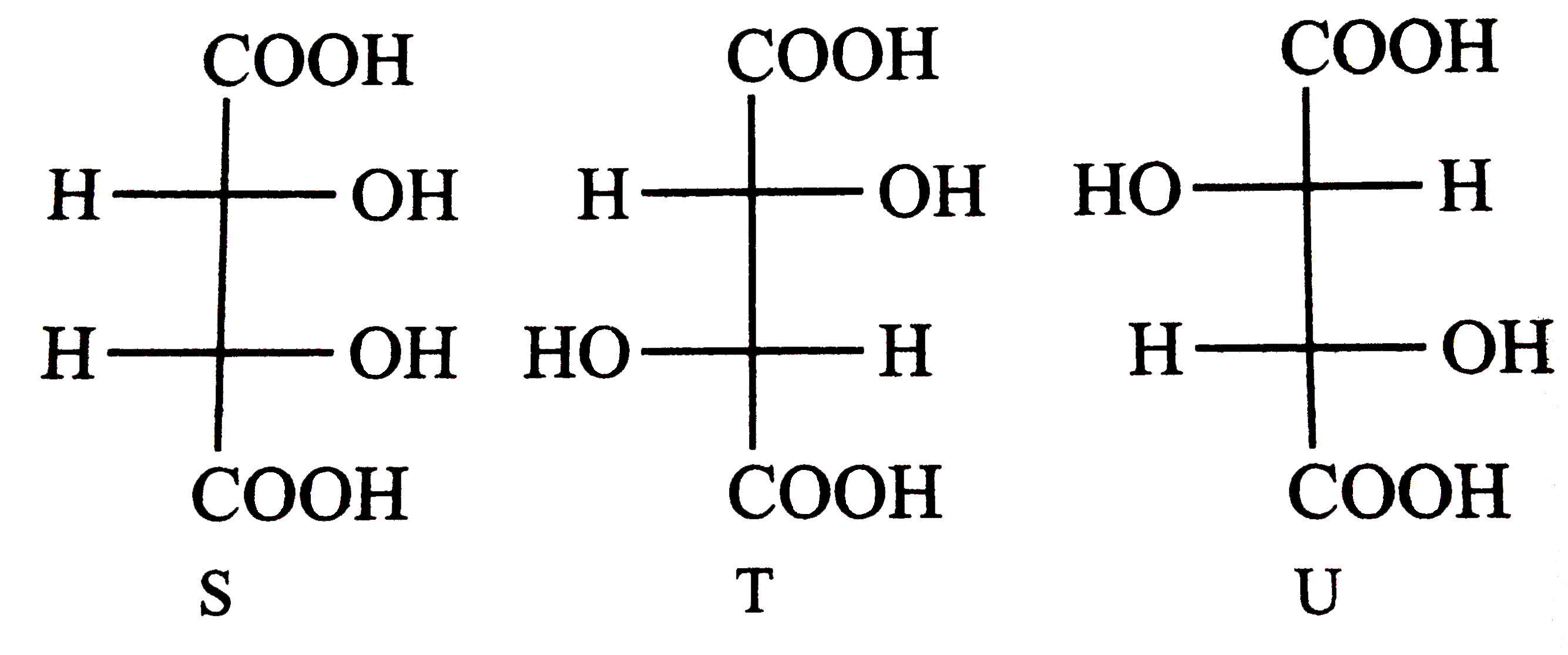
Q. Compounds formed from P and Q are, respectively
Optically active S and optically active pair (T,U)
Optically inactive S and optically pair (T,U)
Optically active pair (T,U) and optically inactive S
Optically inactive pair (T,U) and optically active S
The correct Answer is:B
Since the isomeric dicarboxylic acids (P and Q) with M.Fgt C4H4O4 decolourise Br2/H2O, therefore, they must be unsaturated dicarboxylic acids. In other words, they are geometrical isomers, i.e., cis- and trans. Since the dicarboxylic acid (P) forms an anhydride on heating, therefore, it must be the cis-isomer, i.e., maleic acid while Q must be the trans-isomer, i.e., fumaric acid.
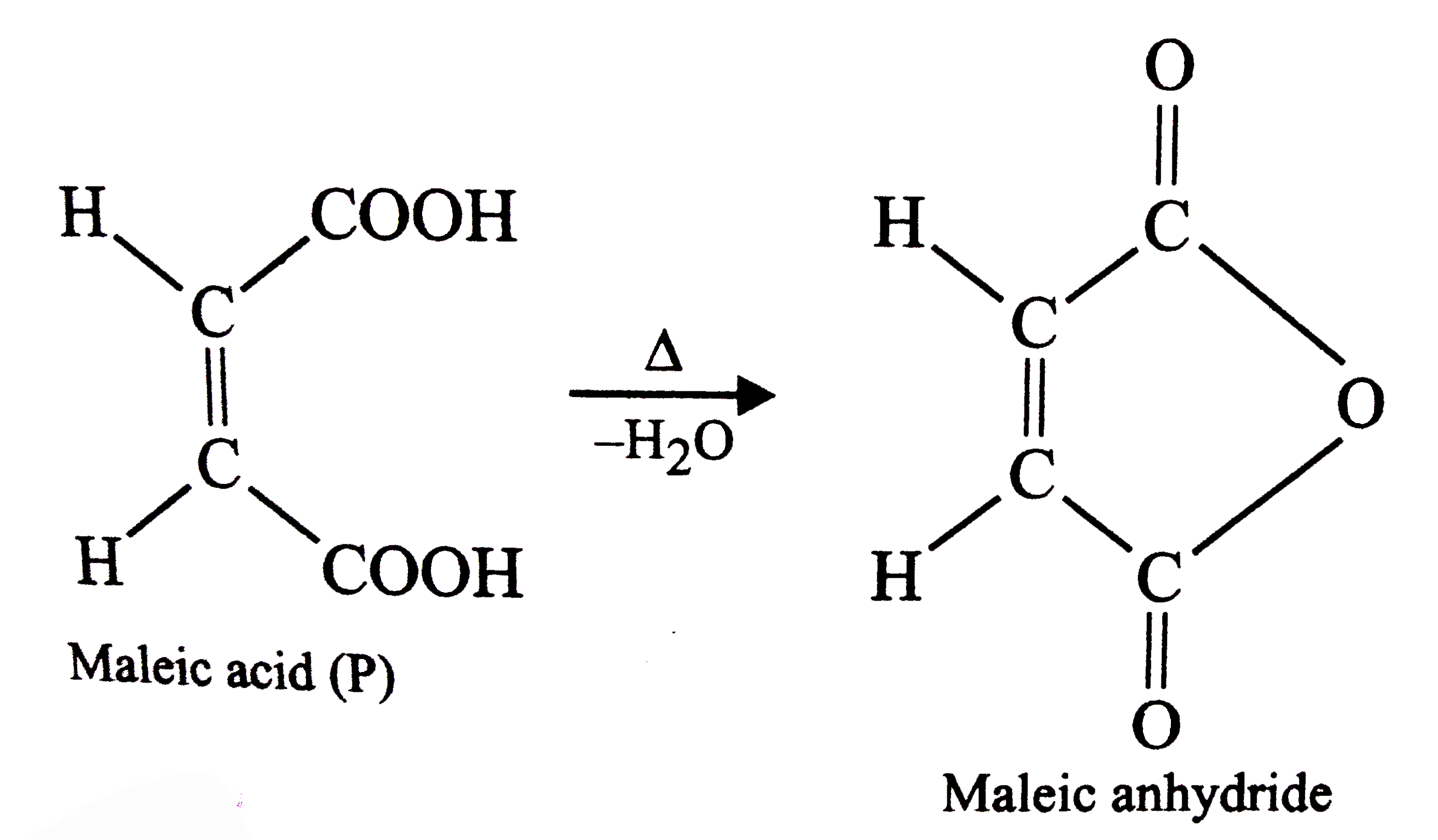
Further, since dilute alk. KMnO4, i.e., Baeyer's reagent brings about cis-hydroxylation of the d.b., therefore, cis-isomer, i.e., maleic acid (P) gives only one isomer, i.e., meso-isomer (S) while the trans-isomer, i.e., fumaric acid gives optically inacive pair (T,U)
 .
.
Topper's Solved these Questions
- ALDEHYDES, KETONES AND CARBOXYLIC ACIDS BOOK - PRADEEPCHAPTER - ALDEHYDES, KETONES AND CARBOXYLIC ACIDS EXERCISE - COMPETITION FOCUS JEE (MAIN AND ADVANCED)/MEDICAL ENTRANCE SPECIEAL (V. MATRIX-MATCH TYPE QUESTIONS)
1 Videos
- ALDEHYDES, KETONES AND CARBOXYLIC ACIDS BOOK - PRADEEPCHAPTER - ALDEHYDES, KETONES AND CARBOXYLIC ACIDS EXERCISE - COMPETITION FOCUS JEE (MAIN AND ADVANCED)/MEDICAL ENTRANCE SPECIEAL (VI. INTEGER TYPE QUESIONS)
11 Videos
- ALDEHYDES, KETONES AND CARBOXYLIC ACIDS BOOK - PRADEEPCHAPTER - ALDEHYDES, KETONES AND CARBOXYLIC ACIDS EXERCISE - COMPETITION FOCUS JEE (MAIN AND ADVANCED)/MEDICAL ENTRANCE SPECIEAL (MULTIPLE CHOICE QUESTIONS-II WITH ONE CORRECT ANSWER)
12 Videos
- ALCOHOLS, PHENOLS AND ETHERSBOOK - PRADEEPCHAPTER - ALCOHOLS, PHENOLS AND ETHERSEXERCISE - IMPORTANT QUESTIONS FOR BOARD EXAMINATIONS.
29 Videos
- APPENDIXBOOK - PRADEEPCHAPTER - APPENDIXEXERCISE - MODEL TEST PAPER <br> (Section C )
15 Videos
Similar Questions
P and Q are isomers of dicarboxylic acid C4H4O4. Both decolorize Br2/H2O. On heating, P forms the cyclic anydride.
Upon treatment with dilute alkaline KMnO4, p as well as Q could produce one or more than one from the S,T and U
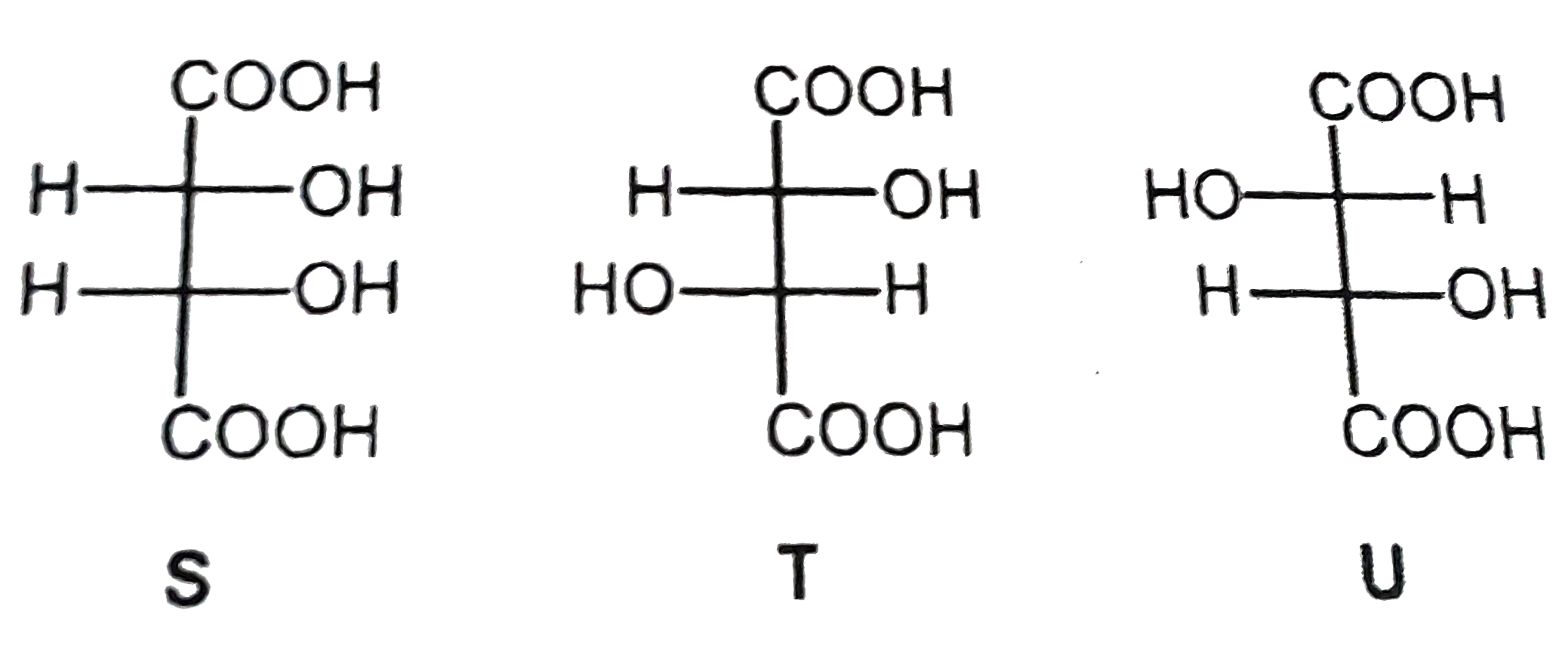
Compounds formed from P and Q are, respectively:
View SolutionOne mole of a hydrocarbon 'A' reacts with 1mil of brominne giving a dibromo compound, C5H10Br2. Compound 'A' on treatment with cold dilute alkaline potassium permanganate solution forms a compound, C5H12O2. On ozonolysis, 'A' gives equimolar quantities of propanone and ethanal. Deduce the structural formula of 'A'
View Solution
Knowledge Check
P and Q are isomers of dicarboxylic acid C4H4O4. Bothdecolorize Br2/H2O. On heating, P forms the cyclic anhydride. Upon treatment with dilute alkaline KMnO4,P as well as Q could produce one or more than one forms S,T and U.
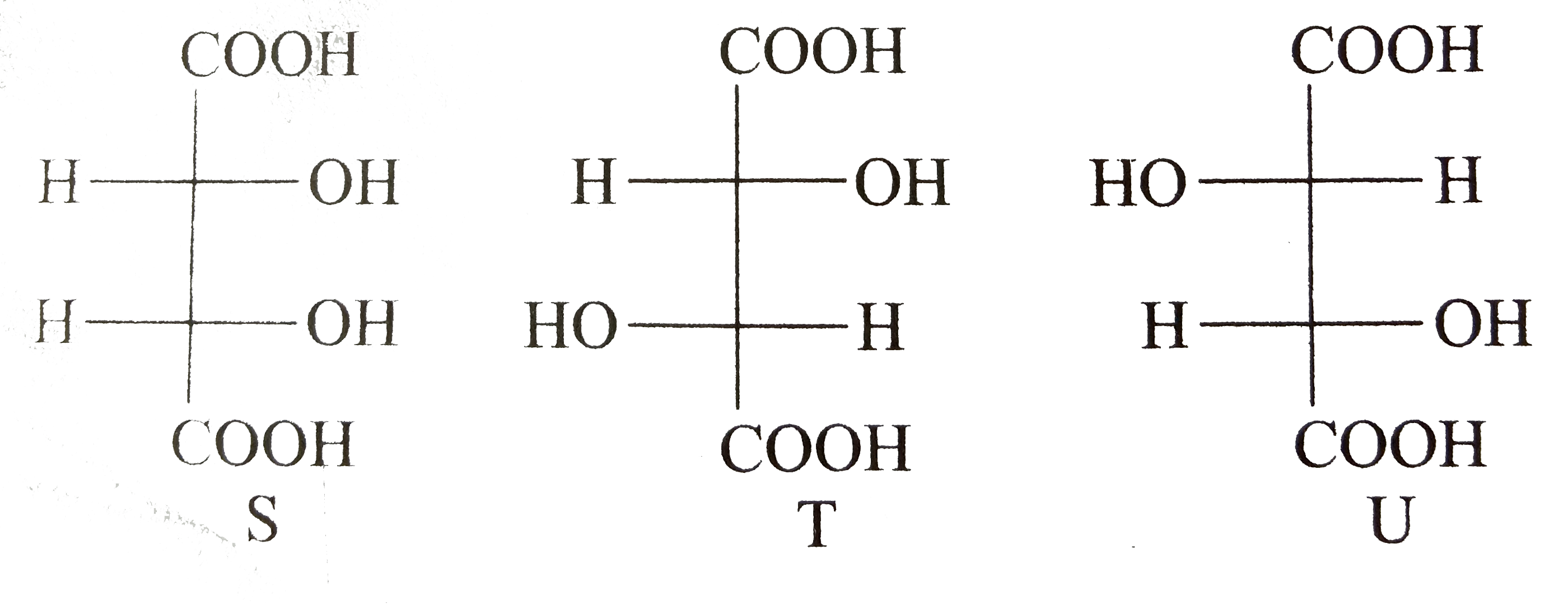 Compounds formed from P and Q are, respectivelyAoptically inactive pair (T,U) and optically inactive SBoptically active pair (T,U) and optically active SCoptically inactive S and optically inactive pair (T,U)Doptically active S and optically inactive pair (T,U)
Compounds formed from P and Q are, respectivelyAoptically inactive pair (T,U) and optically inactive SBoptically active pair (T,U) and optically active SCoptically inactive S and optically inactive pair (T,U)Doptically active S and optically inactive pair (T,U)P and Q are isomers of dicarboxylic acid C4H4O4. Both decolorize Br2/H2O. On heating, P forms the cyclic anydride.
Upon treatment with dilute alkaline KMnO4, p as well as Q could produce one or more than one from the S,T and U

Compounds formed from P and Q are, respectively:AOptically active S and optically active pair (T,U)Boptically inactive S and optically inactive pair (T,U)COptically active pair (T,U) and optically active SDOptically inactive pair (T,U) and optically inactive SP and Q are isomers of dicarboxyhc acid C4H4O4 .Both decolourize Br2/H2O On heating, P forms the cyclic anhydride.
Upon treatment with dilute alkaline KMnO4, P ass well as Q could produce one or more than one from S. T and U.

Compounds formed form P and Q are, respectively.AOptically active s and optically active pair (T,U)BOptically active S and optically inactive pair (T,U)COptcally actve pair (T. U) and optically active SDOptically inactive pair (T. U) and optically inactive S
P and Q are isomer of dicraboxylic acid C4H4O4 Both decolourixe Br2/H2O. On heating , P forms the cyclic anhydride. Upon treatment with duilute alkaline KMnO4. P as well a Q could produce one or more than one from S,T and U.

Compounds formed P and Q are, respectively
View SolutionP and Q are isomer of dicraboxylic acid C4H4O4 Both decolourixe Br2/H2O. On heating , P forms the cyclic anhydride. Upon treatment with duilute alkaline KMnO4. P as well a Q could produce one or more than one from S,T and U.
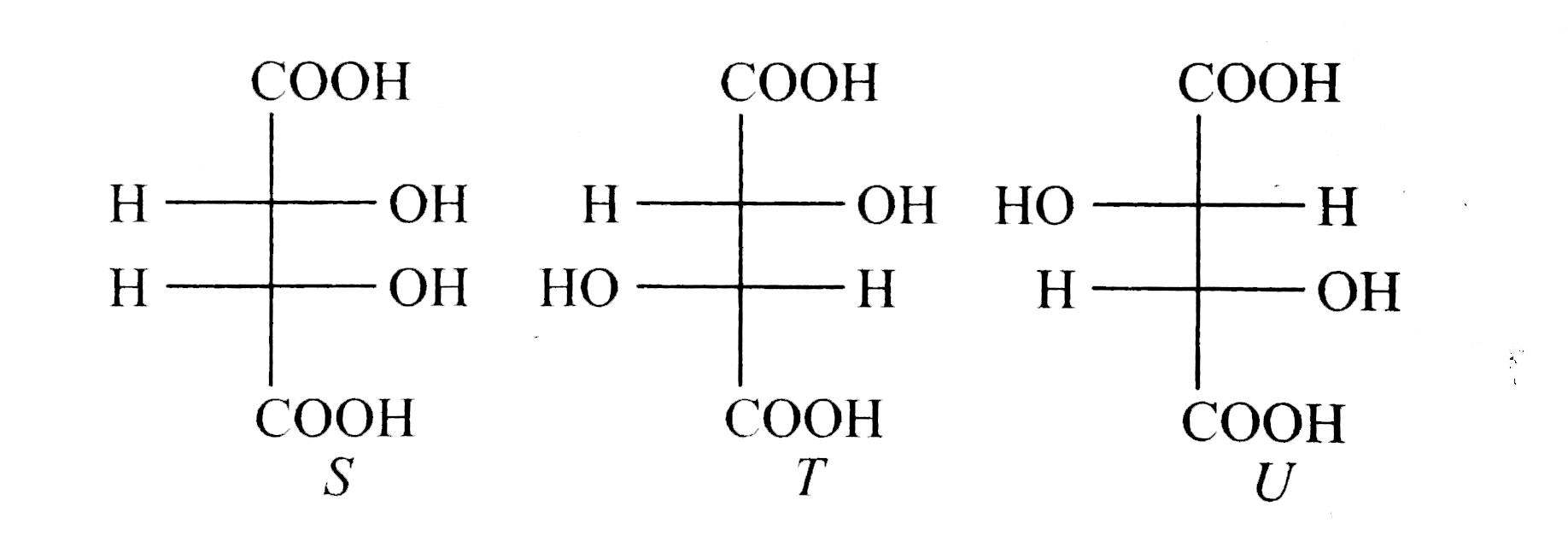
In the following reaction sequences V and W are respectively
QH2/Ni−−−→ΔV

View SolutionP and Q are isomers of dicarboxylic acid C4H4O4. Both decolorize Br2/H2O. On heating, P forms the cyclic anydride.
Upon treatment with dilute alkaline KMnO4, p as well as Q could produce one or more than one from the S,T and U

In the following reaction, sequences V and W are respectively.

View Solution[P] on treatment with H2CrO4 in acetone produced [Q]. [Q] compound upon heating give rise to Acetophenone. The compound [P] is:
View SolutionA substance (P) releases a gas (Q) on reaction with H2O. (Q) decolourises Br2 water. (P) may be
View Solution
